Choosing the right footwear is a very responsible matter. Do you want to stay healthy for a long time? You need different footwear for each event. Choose the right footwear according to orthopedic recommendations. This guarantees you comfort and ease when walking, which is very attractive for men of all ages.
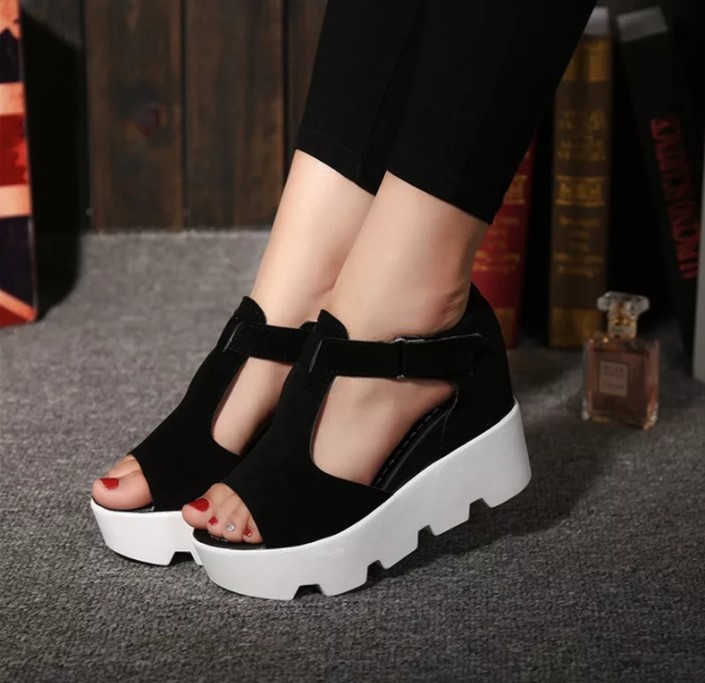
- How to choose shoes without endangering your health?
- What are the risks of flat-soled shoes?
- Shoes with stiletto heels
- Shoes with flat soles (flip-flops, flip-flops, Uggs)
- What are the risks associated with flat-soled shoes?
- What should the ideal shoe be like?
- Leather in summer, synthetic in winter
- expert opinion
- Myth 1: High-heeled shoes make every woman look beautiful. They make the legs appear slimmer and the silhouette appear firmer.
- Myth 3: Is it really true that flat feet can cause headaches?
- flip flops
- What is the ideal shoe?
- Kettlebells on your feet
- Seeds, but no pine cones
- Thick soles
- Flat sole
- What should the ideal shoe look like?
- You might also be interested in
- Top 5 reads
- Rules for commenting
How to choose shoes without endangering your health?
'Walk more in flat shoes' – said an orthopedist friend in response to my back problems. – In a few years you won't be able to bend down at all, and then it won't just be your back that hurts. This wasn't the first time I'd been warned, so I had no choice but to shut up and blush. And again it didn't work. I didn't think flat-soled shoes could be so bad for your health until...
It is common knowledge that a woman feels very weak after giving birth. My postpartum weakness somehow increased 20-fold when I went out. I felt that all my strength stayed at home when I walked in a chador.
One day I put on medium heels instead of my favorite ballet shoes. My astonishment was overwhelming: where had this usual 'street' weakness gone?
Since then, I have no longer attributed the tension and acute feeling of heaviness in my back, legs and shoulders to the postpartum period, but I have started to take the clothing element of my feet more seriously. Now that I've gathered the right information, I'm telling the world how to choose the right shoes.
What are the risks of flat-soled shoes?
Flat soles disrupt the proper alignment of the foot, resulting in foot deformities. Ligaments and tendons are overloaded. Such shoes often cause pain in the toes, especially the big toe. But this is only the beginning. Then my feet start to hurt, then my knees. Lovers of flat shoes develop longitudinal and transverse flat feet, thrombophlebitis, arthritis, pathological changes in the Achilles tendon and curvature of the toes. A common symptom of these diseases is severe leg pain.
The load on the spine when wearing flat-soled shoes is not physiologically distributed, a high risk of developing the insidious disease osteochondrosis. What the heck, even an intervertebral hernia!
Shoes with stiletto heels
Stilettos – the love and scourge of most women. I am not calling for their abolition, but two principles should be kept in mind. First, high heels are for going out, not for 'strutting' on the sidewalk at work. Secondly, heels higher than 6 cm should not be worn permanently.
When people stand flat, the load is distributed evenly on their joints and organs. When you 'ascend' with heels, the center of gravity shifts forward. To maintain balance, the body is forced to reposition bones, organs, and vertebrae. When high heels are constantly worn, all these changes take on a chronic status.
The global consequences of these changes are transverse flat feet, corns, leg pain and varicose veins.
What should you do if high-heeled shoes are part of the dress code? Place padded slippers under your desk and change footwear whenever possible to give your feet a break.

Shoes with flat soles (flip-flops, flip-flops, Uggs)
Flip-flops and flip-flops also have their time and place - beach, swimming pool, water park, sauna. Put them on for 10 minutes to walk from the sea to the hotel, take them off and forget them. Nothing more is necessary.
Why is it necessary to follow this rule? When wearing flip-flops, always bend your toes slightly so that the shoes stay on your feet. This puts strain on the foot muscles and the tension is transferred to the shins, lower back, hips and even the neck. This can lead to headaches and back pain at the end of the day. Metabolic waste accumulates in the lower leg muscles, causing muscle soreness.
Wear sandals and sandals with straps that hug the heel and toes tightly. The same applies to winter boots such as: E.g. Ugg's. The sole should be soft and pliable and the foot should not sag. Flat shoes do not provide the necessary support, so walking on the sidewalk in them is harmful.
And one more rule: always change your winter boots. You should have multiple pairs so you can switch between them. So the foot will work with a different load, and the 'switch' to spring and summer models will not affect the body, the feet will not hurt and feel the discomfort of a sudden change in conditions.

What are the risks associated with flat-soled shoes?
Excessive use of this type of footwear poses risks:
- abnormalities and deformities of the feet;
- stretching of ligaments and tendons;
- Discomfort and pain in all fingers, especially the big toe;
- development of foot and knee problems;
- Longitudinal-transverse flatfoot;
- pathology of the Achilles tendon;
- thrombophlebitis and arthritis;
- crooked toes.

Important!!! The progression of the disease is characterized by severe leg pain.
Due to the uneven load on the spine, there is a risk of developing harmless osteochondrosis or an intervertebral hernia. 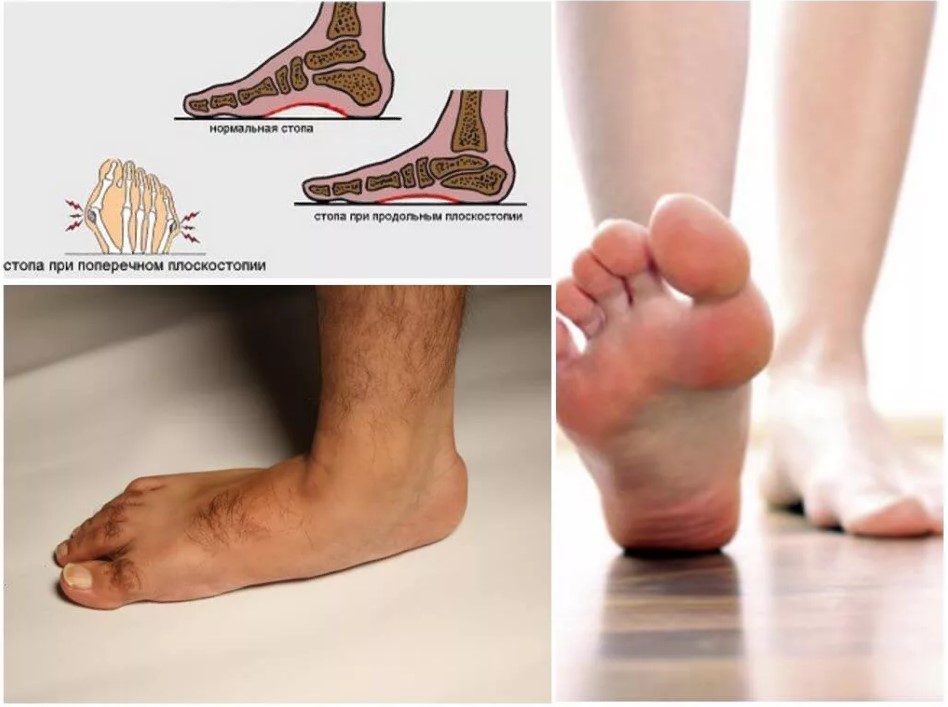
In shoes with flat soles, the heel bone is put under a lot of pressure and not the entire foot. This causes the bones of the foot to deform over time. 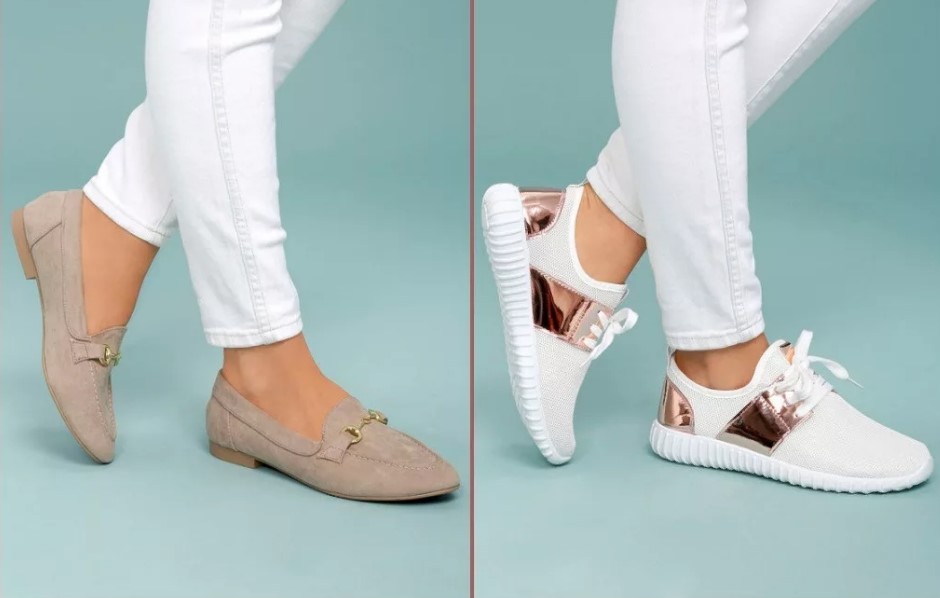
What should the ideal shoe be like?
Do you like comfort and convenience? Take care of your feet. Podiatrists recommend the best shoes:
- Manufactured made of natural, hygroscopic materialThis allows the skin of your feet to breathe and prevents you from sweating. It is best to buy shoes and boots made of leather, crepe, nubuck, suede or fabric.
A word of warning. All plastics create a greenhouse effect and are harmful to your feet.
- The optimal heel height is between 2 and 7 cm. Anything lower or higher is not safe.
- Stiff, one-piece heel.. fixes the foot perfectly in the shoe.
- Wide toe protection is a must. Otherwise there is a high probability of foot deformities and painful 'bones' at the junction between the metatarsal bone and the first phalanx of the toes.
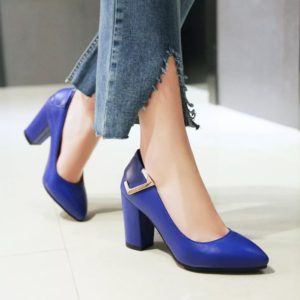
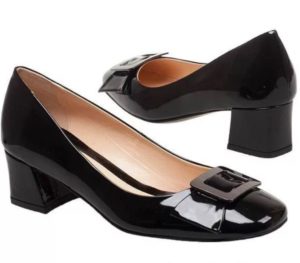

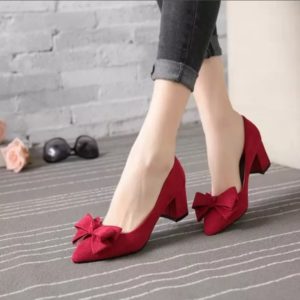
Leather in summer, synthetic in winter
'I won't buy these shoes. They're made of leather! – you explain and decide on natural slippers with synthetic lining. Stop – this is a glaring mistake. A shoe has two layers: an outer layer and an inner layer. The first can be made of anything: synthetics, rubber, dermantine. The second should be made of natural, breathable materials: leather or fabric (cotton or wool). Otherwise, infections (germs thrive in warm, humid climates) and diaper rash can occur. You should only wear barefoot shoes or capron socks. Most young ladies prefer to wear winter boots with warm socks or woolen tights, so the insoles in this case can be made of plastic.
Paragraph. Not higher than 5 cm, stable, thick.
Unit volume. Closed and firmly anchored.
abundance. Loose, not tapered.
material. Any outside, natural inside (leather or fabric – cotton and wool).
expert opinion
Ilya Zhivulin, podiatrist, traumatologist:
– Constantly wearing high-heeled shoes is traumatic. And not just because it's easy to fall out of uncomfortable, thin stilettos. There is another problem: as soon as you put the foot on the heel, the bones that make up the foot assume an unnatural position. One pebble under the sole of your shoe, one unfortunate sudden movement and there's a good chance you'll sprain your foot. If the bones were properly aligned, this situation would not occur. As for shoes with a completely flat sole, the old opinion of doctors that they cause flat feet is wrong. If you don't have the predisposition, you can wear sneakers or flip-flops for as long as you want.
Myth 1: High-heeled shoes make every woman look beautiful. They make the legs appear slimmer and the silhouette appear firmer.
In reality – no. The higher the heel, the smaller the contact surface. Essentially, the entire weight of the body is transferred to the toes. In an effort to do something about it, the feet deform, becoming flatter and increasing the support surface at the expense of these same 'bumps'. But that's not all. A deformed foot no longer fulfills its cushioning function adequately. This means that over time the knees, hips and lumbar spine begin to suffer. Crippled feet and a hunched body are not the effect we would expect from heels, are they?
In reality they are not. Ballerinas, sneakers and other shoes with thin, flat soles are not able to absorb the impact of the heel on a hard surface (laminate, porcelain, asphalt). This means that the constant micro-shocks affect all joints from the ankle to the knee and beyond. Even worse are certain models of summer shoes – flip-flops, flip-flops. They don't stay on your feet but slip when you walk. In this case, the person has to press on the toes with each step, which puts strain on some foot muscles. In general, the gait differs from the physiologically normal gait. The consequences of such abuse are dislocations, subluxations, etc.
What should I do? A small paragraph is essential. Flip-flops are only suitable for walking from the deck chair to the sea and back.
Myth 3: Is it really true that flat feet can cause headaches?
In reality it is YES. Imagine a chain reaction. When flat feet cannot perform their biomechanical functions, walking becomes a series of shocks and impacts that are transmitted through the spine to the brain. In addition, all of our joints are put under greater strain at the same time: the pelvis 'rides', the spine is flexed, nerve endings and neck muscles are tensed (which leads to a lack of oxygen to the brain cells). And, voila, the 'guilty' legs, and it's reached the head!
Let's start with the fact that marathon running is not about a healthy lifestyle at all. Excessive exertion only harms your health. And not just in running. There are a number of sports that literally provoke flat feet. These include particularly popular figure skating and tennis. The specific load leads to specific 'fatigue' injuries. This includes the so-called 'runner's knee'. We all know how to 'plow to the bone'. In the case of running mania, the metaphor becomes real. Regular marching and running leads to gradual destruction of the articular cartilage. We do ourselves particular harm when we suddenly join a 'running group'. What should I do? The right way is to consult a specialist (sports doctor or trainer) who will calculate at what pace you can increase the load. For example, you should prepare for a 10 km run by gradually increasing the effort over a period of at least three months.
flip flops
Remember: flip flops are shoes for running on the beach or in the swimming pool! They should not be worn all the time. Flip-flops have a completely flat sole with no thickening under the heel or arch of the foot. If you wear them constantly, expect excessive strain on your spine and calves.
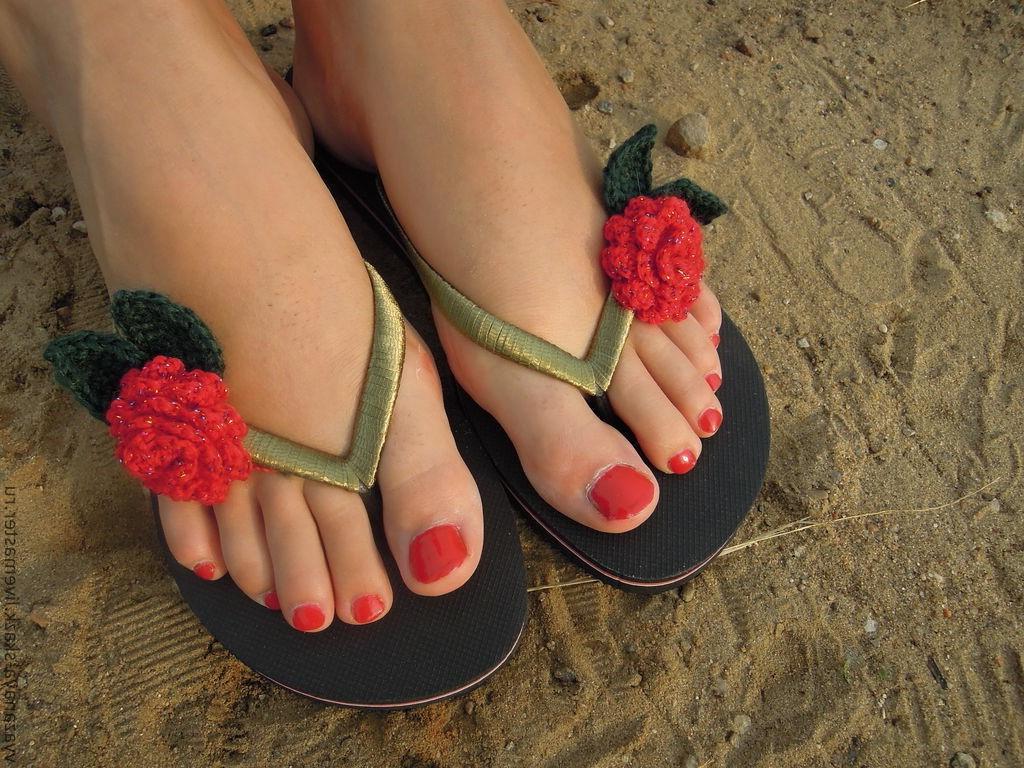
In general, shoes must have an insole. It provides cushioning for the foot. If it is missing, the feeling for contact with the ground is lost. The consequences are sprains, dislocations and broken bones.
What is the ideal shoe?
At least a shoe with well-fitted and high-quality orthopedic insoles. Their usefulness cannot be overstated because:
- They distribute the pressure appropriately and relieve strain on overstressed areas.
- They prevent the formation of corns and calluses.
- They improve cushioning and almost completely absorb shocks.
- They reduce foot pain.
- Stabilize the foot.
- Support the longitudinal and transverse arches.
- They support better posture.
The material from which the shoes are made is also important. The best choices are suede, leather, fabric, nubuck and crack. But definitely not artificial substances.
The heel must also be appropriate - between 2 and 4 cm, as already mentioned. You also need a sturdy, cushioned heel to protect your foot. And of course no tight socks.
Such shoes are not only as comfortable as possible to wear, but also do not harm your health.
Kettlebells on your feet
Under the name of. 'Chronic venous insufficiency' Doctors generally refer to diseases that affect the venous outflow of the lower limbs: varicose veins, venous thrombosis, etc. The symptoms of chronic venous insufficiency are diverse and depend on the stage of the disease. First, the lower legs and feet swell at the end of the day, the calves feel heavy, shoes that are comfortable in the morning seem to become stiff in the evening, and elastic socks or knee-highs leave marks. Later there is a 'throbbing' pain in the calves. The appearance changes: small blue-red spider veins form on the thighs and shins and small veins appear. Impaired venous drainage can promote the development of a dangerous disease: thrombophlebitis.
Not only people who spend a lot of time on their feet belong to the risk group, but also lovers of heavy footwear (e.g. shoes with a massive platform or ugly grunge boots): constantly wearing such 'heavy things' creates all the conditions for the development of varicose veins. Shoes with flat soles or shoes that are too tight around the ankles, shins or calves also hinder good venous circulation.
Seeds, but no pine cones
The ankles have their own problems, the most common of which are 'nodules' (i.e. thickenings). This is the name given to the deformed joints of the big toes, which occur with elongated flat feet and excessive wearing of tight shoes with high heels. 'The bones in the feet usually affect women after the age of 45 to 50, but in women who like to wear tight shoes, the nodules can appear as early as the age of 25 to 30. In order to avoid this problem, which in most cases has to be solved surgically, orthopedists advise choosing the right footwear. If there is a predisposition to the formation of 'cones on the feet', the recommended models are supinators, and the heel – no higher than 4 cm. Some simple exercises can help prevent this phenomenon: regularly rolling a roller or bottle on the floor, picking up pencils scattered on the floor with your toes, walking on your tiptoes and then on your heels. Such simple exercises are a great help for the health of your feet!
The fashion of high heels can cause problems ranging from corns and toe deformities to pain in the foot (heel spurs and other pathologies), lower back, spine and large joints. Remember: stilettos are very bad for the back, and high and wide heels increase the risk of early osteoarthritis in the knees.
Timur Shcherbak
Traumatologist and orthopedic surgeon at St. Andrew's Hospital
Thick soles
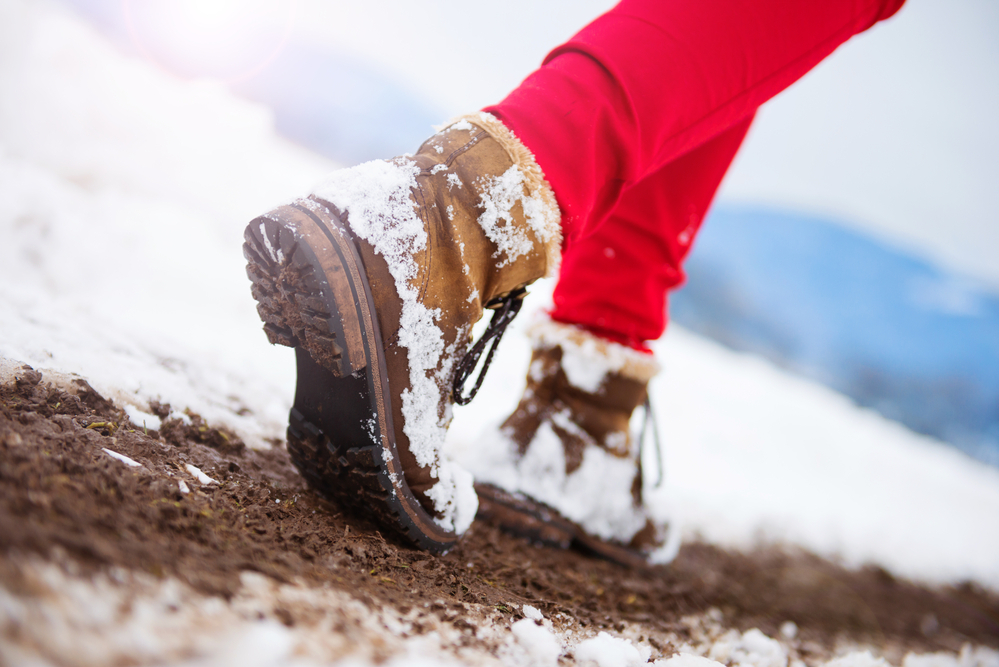
Thin soles in winter boots? It sounds familiar and New Year's Eve: remember the hero of the Ryazanov comedy. If you really can't bear to part with a pair you like, you can upgrade your shoes with a Baize or fur insole. If you wear orthopedic insoles, you should take them to the store to try them on.
But heavy, non-flexible soles are not the best choice either,” – says Olga Chizhevskaya. – Plateaus, wedges – Be careful, this also involves violation of the stride pattern and dysfunction of the foot muscles. And most importantly: the soles of winter shoes should be grooved. This not only prevents falls and injuries, but also makes walking less strenuous and energy-consuming.'
Flat sole
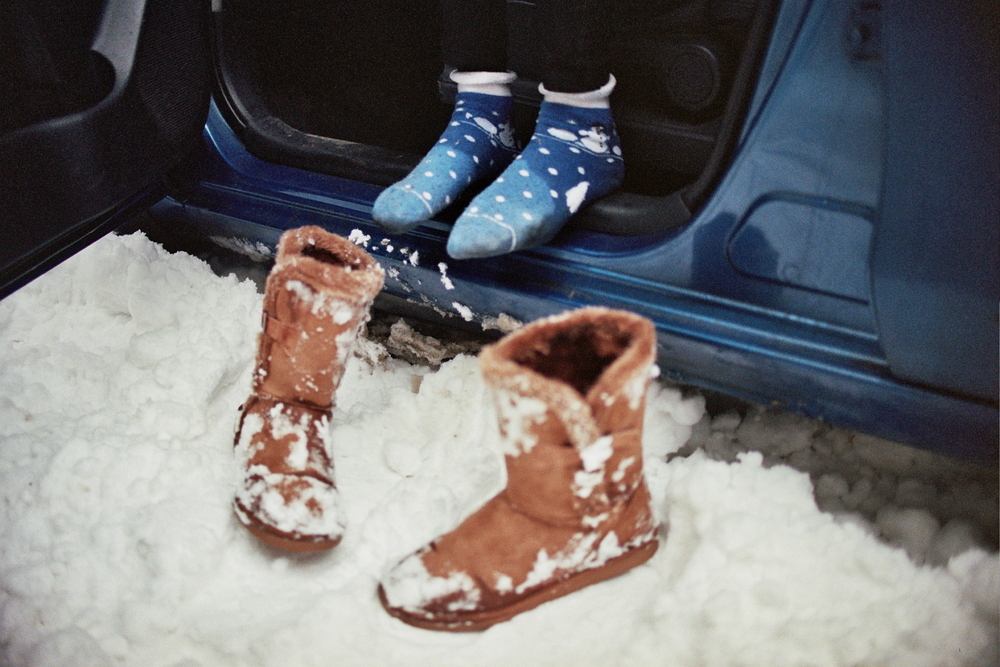
Another criterion that you should definitely pay attention to. According to podiatrists and chiropodists, light, supple and fashionable Uggs can be worn just like high-heeled shoes, just in a 'dosed' manner, without fanaticism. 'The lack of height difference between the forefoot and rear foot leads to considerable overloading of the metatarsal bones,' says our expert. – This in turn weakens the muscles that form the arch of the foot. The feet become flat and set off a cascade of illnesses. The pain and swelling initially occurs in the feet and then moves up to the knees, lower back, and neck. The list of long-term consequences is also impressive: thrombophlebitis, arthritis, arthrosis, intervertebral fractures.
What should the ideal shoe look like?
- A wide toe box that allows the toes to flex and spread.
- A small heel - podiatrists have developed a formula for calculating heel height: the length of the foot in cm divided by seven. Such heels help the feet while walking and protect them from fatigue. In sizes 37-39 (22.5 - 24.5 cm) the heel height is 2-4 cm.
- With heel support and a midsole that keeps the heel securely in place.
- Large heel height to keep the heel in place.
You might also be interested in

Top 5 reads
© 2019 'Argumenty i Fakty v Belorussii' GmbH. Director, editor-in-chief: Igor Sokolov. Deputy editors-in-chief: Evgeny Yuryevich Oleinik and Yulia Vladimirovna Teltevskaya. Editor-in-chief of the aif.by website: Vladimir Scharpilo. All rights reserved. The reproduction and use of all material is prohibited; partial citation is only possible with a hyperlink to www.aif.by. Editorial contact telephone: +375 29 642 67 51.
Certificate of the Ministry of Information of the Republic of Belarus No. 1040 dated 01/14/2010.
Rules for commenting
These simple rules will help you enjoy communicating on our website!
To ensure that your visit to our website continues to be pleasant, we ask you to strictly follow the rules for commenting:
Your message cannot exceed 2500 characters (including spaces).
The language of communication on the AiF website is Russian. You can only use other languages in your discussion if you are sure that your readers will understand you correctly.
Comments must not contain obscenities, expressions that degrade human dignity or incitement to inter-ethnic feuds.
Spam, promotion of goods, services, other resources, media or events unrelated to the article are prohibited.
Messages that are not related to the content of the article or the context of the discussion are not welcome.
Let's respect each other and the site where you and other readers can connect and express your thoughts. The administration of the site reserves the right to delete comments or parts of comments if they do not meet these requirements.
The editorial team reserves the right to publish individual comments in the printed version of the publication or as a separate article on www.aif.ru.
If you have a question or suggestion, please send a message to the site administration.
Read more:- What is the heel of a shoe called?.
- shoes for shoes.
- Optimal heel height for women.
- Mortar for soles.
- What to do if your shoes pinch from the inside?.
- Rubbing heel in shoes.
- Damaged insoles in shoes - what to do?.
- The heel of the shoe is worn.
